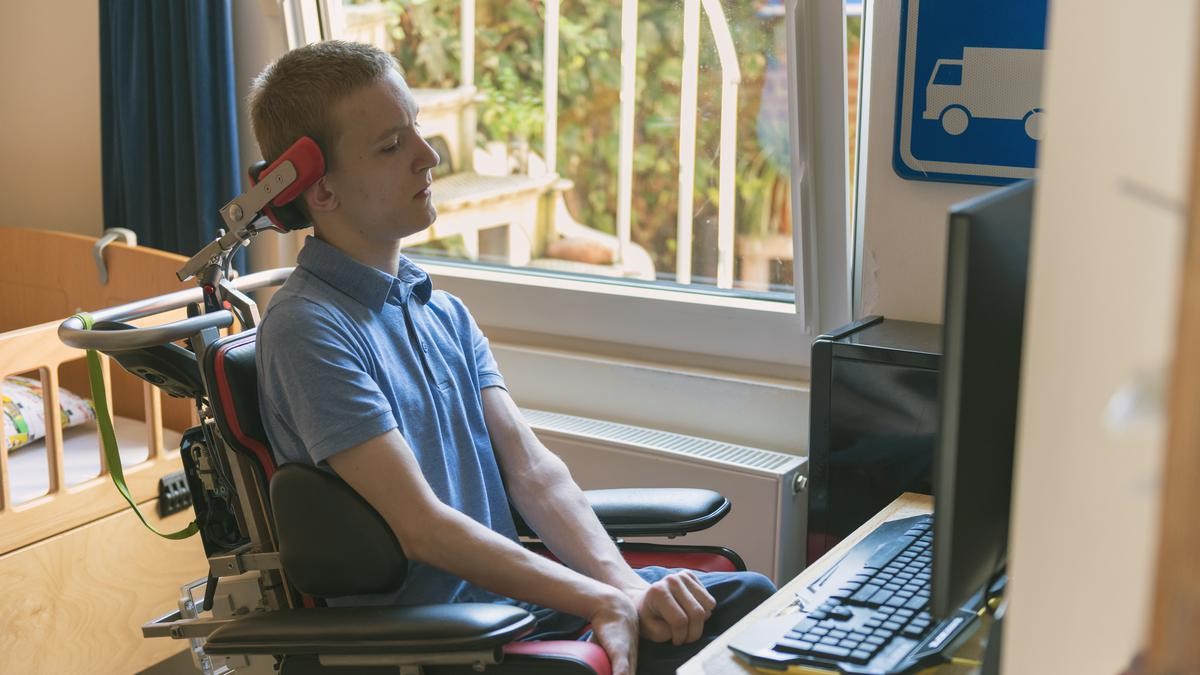Description

Disclaimer: Copyright infringement not intended.
Context: Support groups for patients with amyotrophic lateral sclerosis urge that the condition be counted as a rare disease, which they hope will ease eligibility for financial assistance
What is amyotrophic lateral sclerosis (ALS)?
- Amyotrophic lateral sclerosis (ALS), also known as Lou Gehrig's Disease, is a rare neurological disease that affects motor neurons.
- As motor neurons degenerate and die, they stop sending messages to the muscles, which causes the muscles to weaken, start to twitch (fasciculations), and waste away (atrophy). Eventually, the brain loses its ability to initiate and control voluntary movements.
- The disease is progressive, meaning the symptoms get worse over time.
- ALS has no cure and there is no effective treatment to reverse its progression.
- However, about 10 per cent of people with ALS survive for a decade or more.
|
Note
Motor neurons are those nerve cells in the brain and spinal cord that control voluntary muscle movement.
Voluntary muscles are those we choose to move to produce movements like chewing, walking, and talking.
|
Early symptoms include:
- Muscle twitches in the arm, leg, shoulder, or tongue
- Muscle cramps
- Tight and stiff muscles (spasticity)
- Muscle weakness affecting an arm, a leg, the neck, or diaphragm
- Slurred and nasal speech
- Difficulty chewing or swallowing
As the disease progresses, muscle weakness and atrophy spread to other parts of your body. We may develop problems with:
- People with ALS eventually will not be able to stand or walk, get in or out of bed on their own, or use their hands and arms
- Chewing food and swallowing (dysphagia)
- Speaking or forming words (dysarthria)
- Breathing (dyspnea); individuals with ALS eventually lose the ability to breathe on their own and must depend on a ventilator.
Most people with ALS die from respiratory failure, usually within three to five years from when the symptoms first appear.
Who is more likely to get amyotrophic lateral sclerosis (ALS)?
Risk factors for ALS include:
- Age—Although the disease can strike at any age, symptoms most commonly develop between the ages of 55 and 75.
- Biological sex—Males are slightly more likely to develop ALS. However, as people age the difference between the sexes disappears.
- Race and ethnicity—Caucasians and non-Hispanics are most likely to develop the disease, but ALS affects people of all races and ethnic backgrounds.
Sporadic and Familial ALS
- Nearly all cases of ALS are considered sporadic. This means the disease seems to occur at random with no associated risk factors and no family history of the disease.
- About five to 10 per cent of all ALS cases are familial (also called inherited or genetic). Mutations in more than a dozen genes have been found to cause familial ALS.

Ways to prevent or treat ALS
Diagnosing ALS
- There is no single test that can diagnose ALS. A neurologic examination will test your reflexes, muscle strength, and other responses and will be held at regular intervals to assess whether symptoms such as muscle weakness, muscle wasting, and spasticity are progressively getting worse.
Treating ALS
- There is no treatment to reverse damage to motor neurons or cure ALS. However, treatments can make living with the disease easier.
- Doctors may use the following medications approved by the U.S. Food and Drug Administration (FDA) to support a treatment plan for ALS:
- Riluzole (Rilutek), an oral medication, riluzole that prolongs survival by a few months, Edaravone (Radicava), etc.
Self-care or lifestyle changes
- Nutritionists can teach you to plan and prepare small meals throughout the day that provide enough calories, fibre, and fluid and how to avoid foods that are difficult to swallow.
Rehabilitation
- A treatment plan for ALS usually includes rehabilitation. Rehabilitation is different for everyone and a very important part of management.
Physical and occupational therapy
- It is recommended that low-impact exercises such as walking, swimming, or using a stationary exercise bike along with a range of motion exercises strengthen muscles.
Communications support
- A speech therapist can teach you strategies to speak louder and more clearly and help you maintain the ability to communicate
Breathing support
- As our muscles responsible for breathing start to weaken, we may have shortness of breath during physical activity and difficulty breathing at night or when lying down.
Biomarkers
- They are biological measures that help identify the presence or rate of progression of a disease or the effectiveness of a therapeutic intervention. Biomarkers can be molecules derived from a bodily fluid (blood or cerebrospinal fluid), an image of the brain or spinal cord, or a measure of the ability of a nerve or muscle to process electrical signals.
|
PRACTICE QUESTION
Q. Consider the following statements about Amyotrophic lateral sclerosis (ALS)
- It is also known as Lou Gehrig's Disease.
- It is a rare neurological disease that affects motor neurons.
- The disease is progressive, meaning the symptoms get worse over time.
- ALS has no cure and there is no effective treatment to reverse its progression.
How many of the above statements are correct?
- 1,2 and 3 only
- 1 and 3 only
- 2 and 3 only
- All are correct
Ans: D
|

https://www.thehindu.com/sci-tech/science/negotiating-a-life-with-amylotropic-lateral-sclerosis/article67198169.ece
















